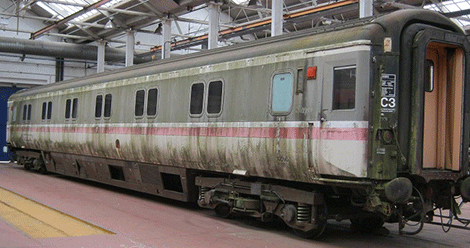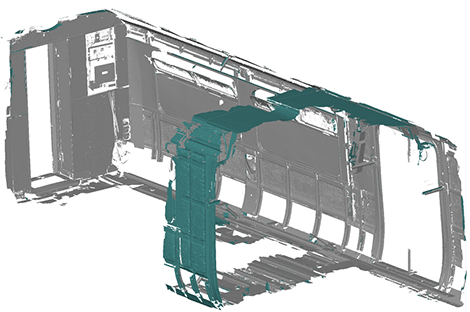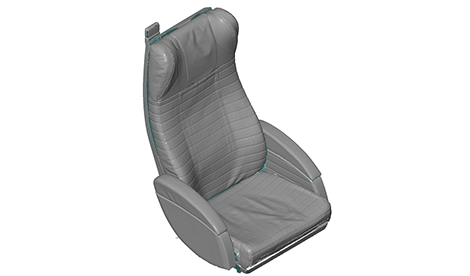https://giphy.com/embed/ufNitihVjVGo0
Nothing sums up the grim reality of a British commute than the images of tired, knackered old train carriages, its seats having seen thousands of arses, feet, buckets of KFC and spilled fluids.
In an effort to revamp and redesign the cabins of the temperamental, sometimes-moving lifeblood of British industry, the new designers first needed measurements of what god awful messes they had to work with.
Enter the team from Physical Digital 3D, which scanned the interiors of the existing rolling stock to find out the exact dimensions of the carriages, before considering what design improvements to implement.

Beautiful, ain’t she?
Able to capture data from items between sub-10mm and 20m using its GOM ATOS Triple Scan optical measurement systems, the team ended up scanning various existing carriages, inside and out, including the 319 passenger train, a dual-voltage electric multiple unit train, the MKIII commuter carriage and a sleeper carriage.
Coded reference markers were used to orientate all the scanned images together, which subsequently position the un-coded markers in a point cloud. Calibrated optical scale bars are used to define the relative size.

3D scanned interior and exterior
Scanning taking lace in a busy train yard, alongside maintenance crews, the portability of the 3D scanner was a useful bonus for swiftly packing up and redeploying, as well as squeezing into tight areas.
The data was all fed into Geomagic and GOM Inspect Professional Software to align, smooth and thin all meshes, creating 3D CAD models of the rolling stock, before exporting it as an STL file for the designers to begin their much needed work.
It’s an interesting process, which we expect to see more of as more is done to breathe new life into older trains, making them fit for purpose.

Pity this poor seat






